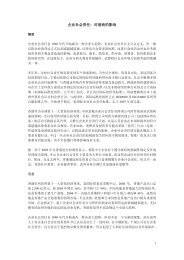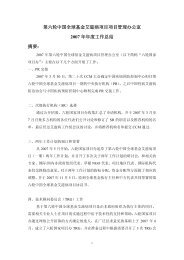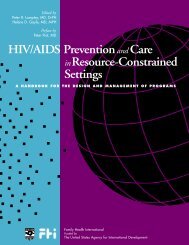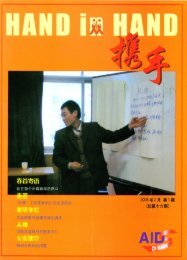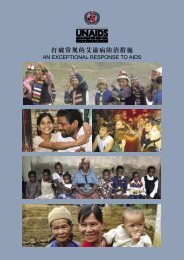The Training of Trainers Manual - UNFPA
The Training of Trainers Manual - UNFPA
The Training of Trainers Manual - UNFPA
You also want an ePaper? Increase the reach of your titles
YUMPU automatically turns print PDFs into web optimized ePapers that Google loves.
<strong>The</strong> scenarios described above may <strong>of</strong>fer opportunities to provide information on numerous topics,<br />
such as:<br />
▼ When is the right time to have sex<br />
▼ What is the window period <strong>of</strong> HIV infection<br />
▼ Who should be tested for HIV<br />
▼ Can STIs be treated<br />
▼ What is the difference between a latex and lambskin condom<br />
▼ What are spermicides and lubricants<br />
▼ What are the effects <strong>of</strong> ecstasy (or a drug used in your community) on sexual decision-making<br />
Exercise: Role play revolution<br />
Objectives<br />
To serve as a topic lead-in to introduce various sides <strong>of</strong> an issue<br />
20<br />
minutes<br />
To provide information, motivate people to change behaviour, and<br />
demonstrate a variety <strong>of</strong> negotiation and decision-making skills<br />
To model appropriate behaviour<br />
To provide information about accessing resources<br />
Also suitable for<br />
training <strong>of</strong> peer<br />
educators<br />
Others as may be identified by trainer<br />
Materials<br />
Two chairs<br />
Process<br />
Have eight to ten volunteers stand in a semi-circle behind the backs <strong>of</strong> two chairs.<br />
Ask two volunteers to sit on the chairs; explain that they will do a little acting. Ask<br />
one <strong>of</strong> the players sitting on the chairs to start an improvised role play by saying<br />
something to which the other player responds. Explain that at any point, one <strong>of</strong> the<br />
participants standing behind the chairs can ‘tap in’ and take over by simply lightly<br />
tapping the shoulder <strong>of</strong> one <strong>of</strong> the actors in the improvisation (provided this kind<br />
<strong>of</strong> touch is acceptable in the local culture). <strong>The</strong> participant who taps in can either<br />
continue the story or start a new scene.<br />
Closure<br />
After most or all <strong>of</strong> the participants have had a chance to act, end the role play and<br />
start a discussion about what the participants experienced while playing their roles.<br />
50 <strong>Training</strong> <strong>of</strong> <strong>Trainers</strong> <strong>Manual</strong>




